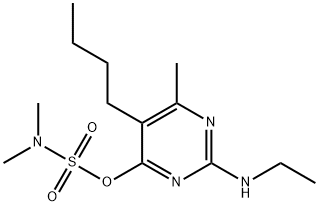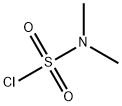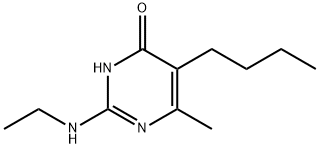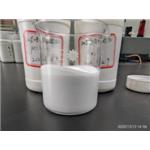Uses
Bupirimate is a systemic fungicide that provides protective and
curative control of powdery mildew (Podosphaera leucotricha) mainly in
pome fruits, stone fruits and glasshouse roses. Other uses include berries,
vines and cucurbits.
Uses
Bupirimate is a pyrimidine based fungicide with protective and curative activity for the control of fungal diseases by interfearing with nucleic acid synthesis.
Definition
ChEBI: A member of the class of aminopyrimidines that is 2-ethylaminopyrimidine carrying methyl, butyl and dimethylaminosulfooxy substituents at posiitons 4, 5 and 6 respectively.
Metabolic pathway
Bupirimate degrades rapidly when exposed to sunlight. Minimal penetration
of bupirimate residues in treated apples was observed. Degradation
of bupirimate in/on fruit surfaces was mainly due to photolytic processes.
Metabolism in plants and animals is similar and includes the initial
cleavage of the dimethylsulfamate-pyrimidine linkage to yield ethirimol
which is also an active fungicide. Numerous degradation products were
generated from N-dealkylation, hydroxylation and conjugation reactions
and the opening of the pyrimidine ring (Scheme 1).
Degradation
Bupirimate (1) is stable in dilute alkaline solution, but readily hydrolysed
in dilute acidic solution. Bupirimate was rapidly decomposed in aqueous
solution when exposed to sunlight (Hassall, 1982). Cleavage of the
dimethylsulfamate-pyrimidine linkage yielded ethirimol [5-butyl-2-
ethylamino-6-methylpyrimidin-4-ol (2)] as the major product. Ethirimol,
an active fungicide, was degraded slowly under these test conditions.
Four additional minor products were also detected. Three of these
products were identified aS isomers of bupirimate, resulting from the
migration of the dimethylsulfamate moiety to the various nitrogen
molecules (compounds 3, 4 and 5; Cavell and Lincoln, 1974; Teal and
Skidmore, 1976).








